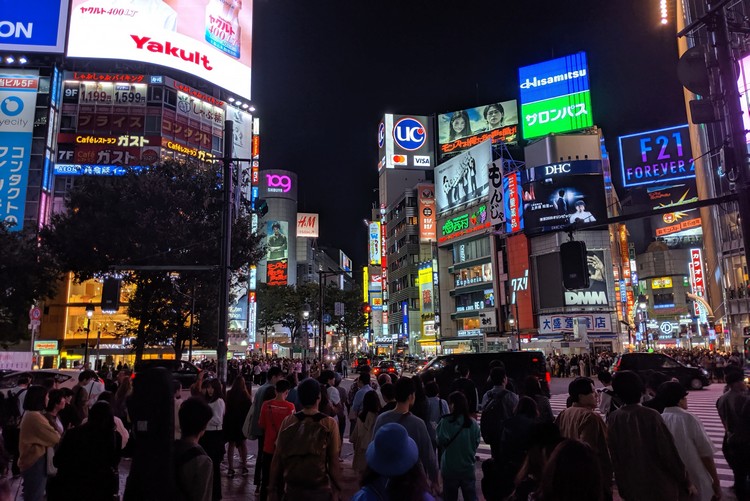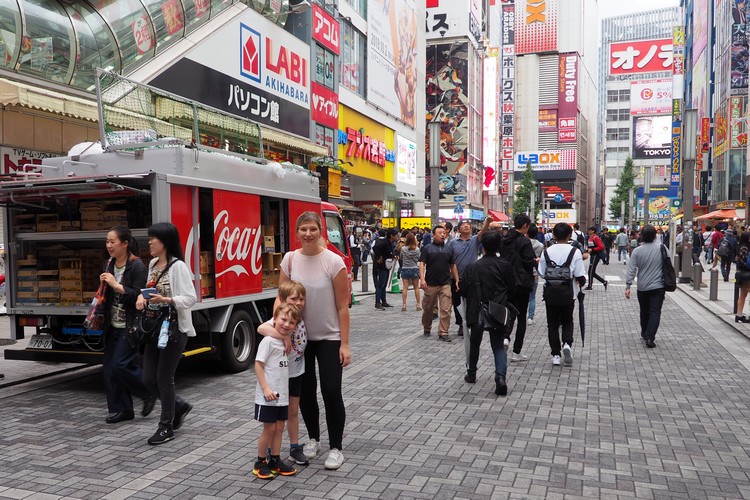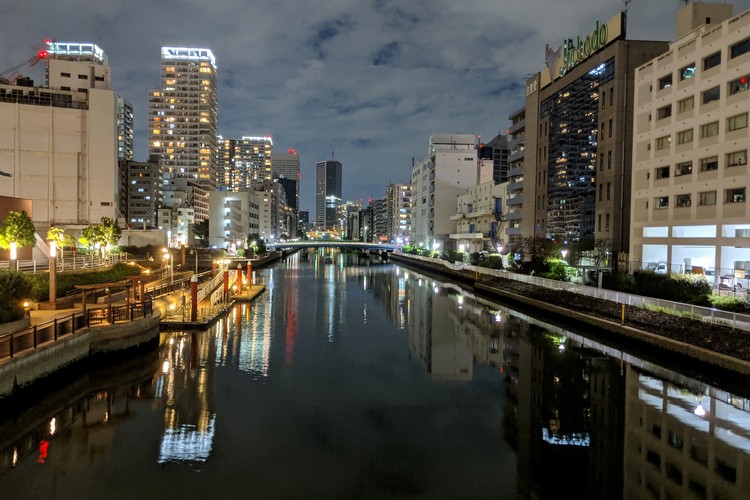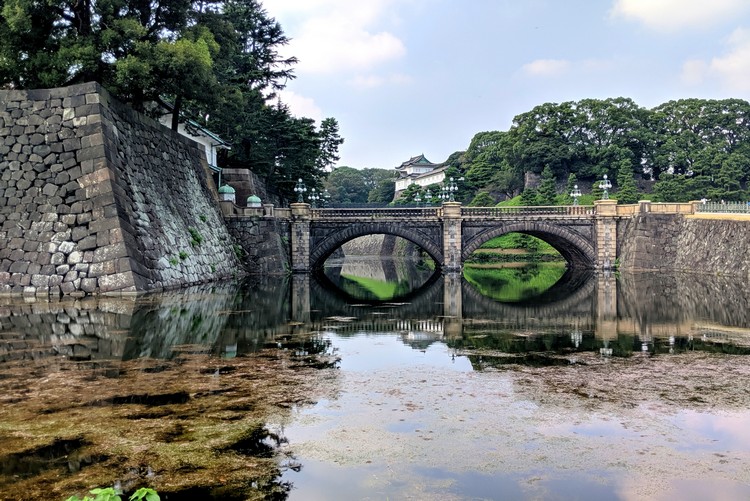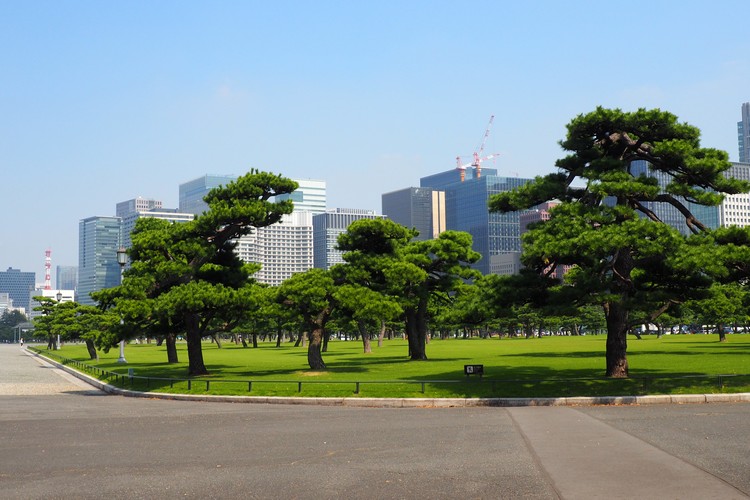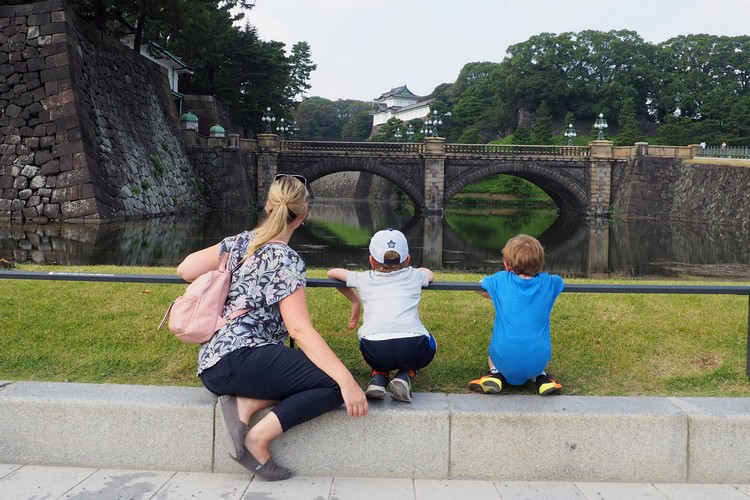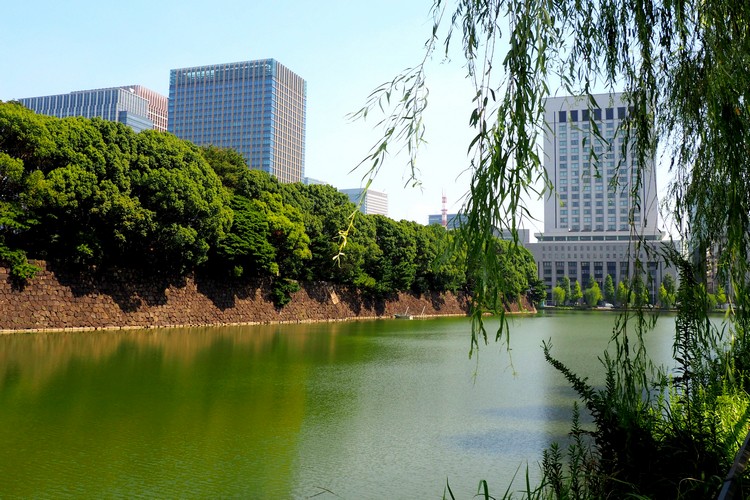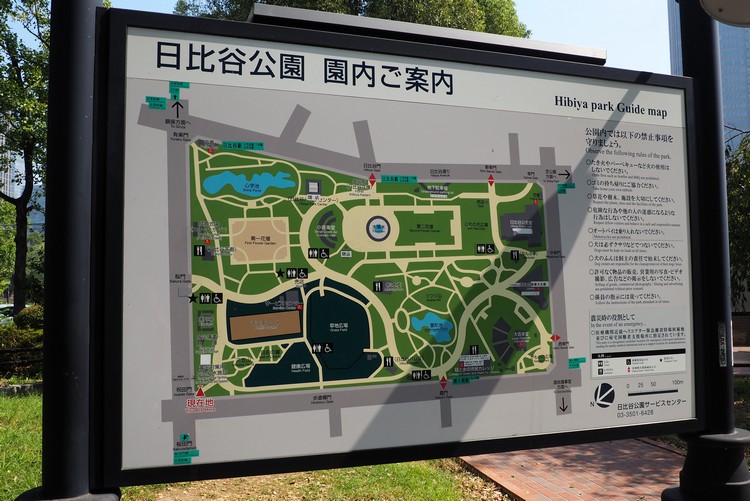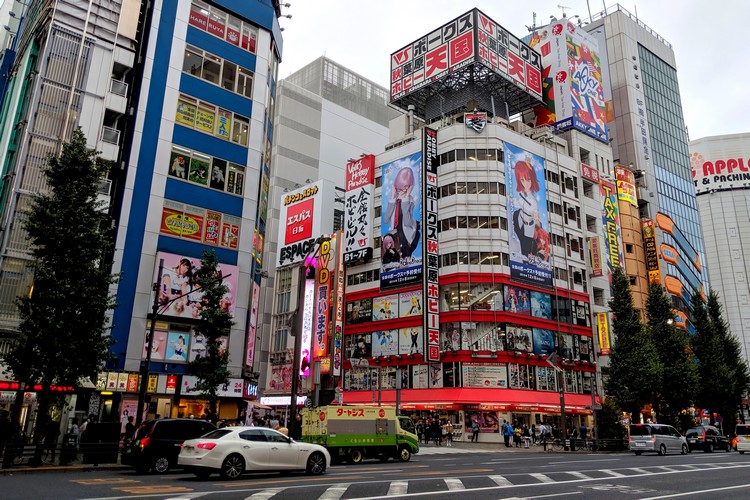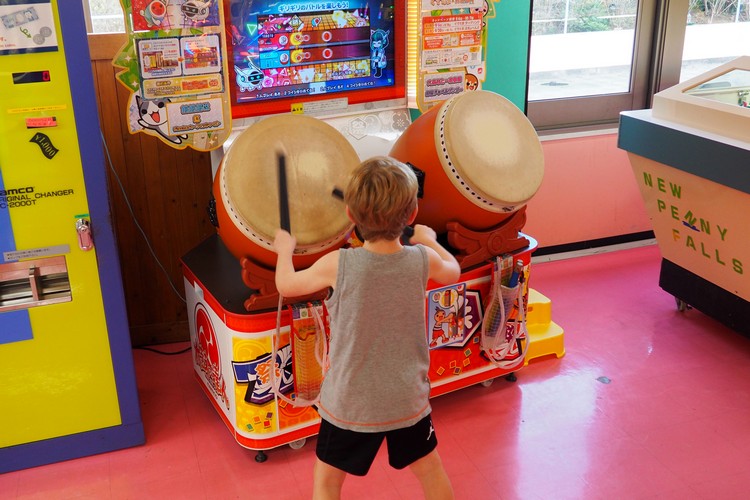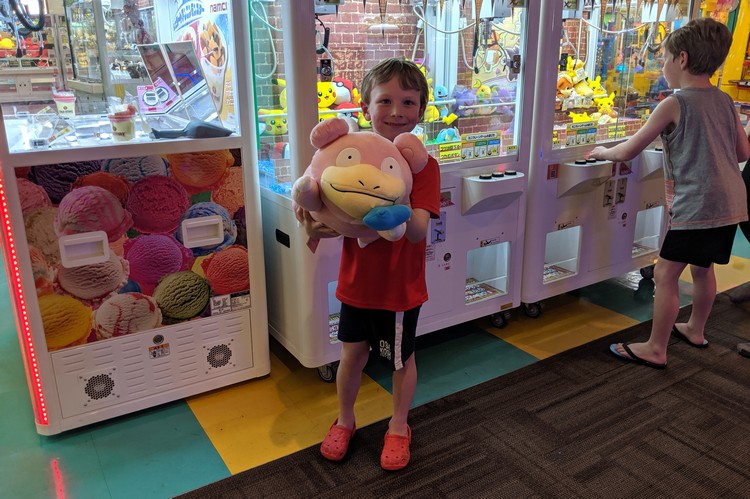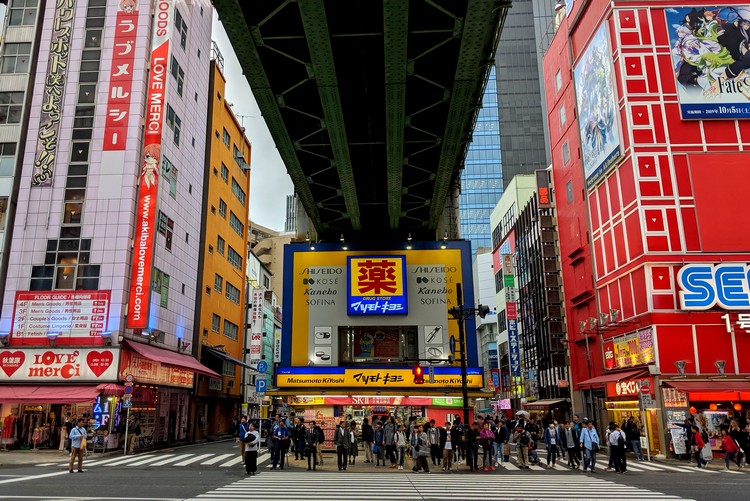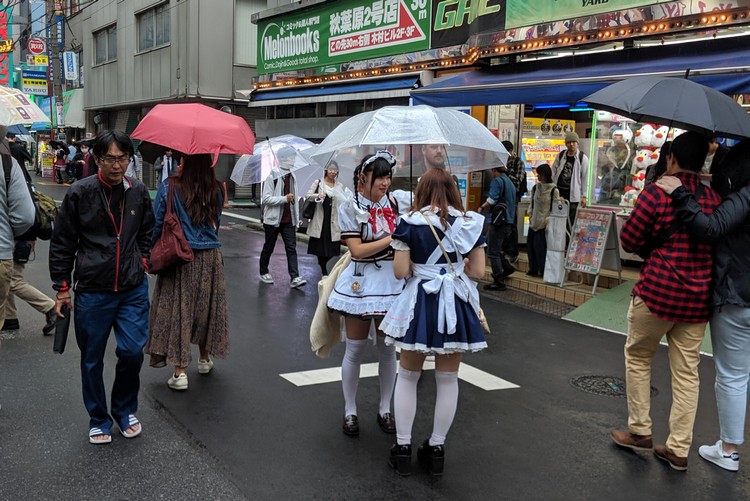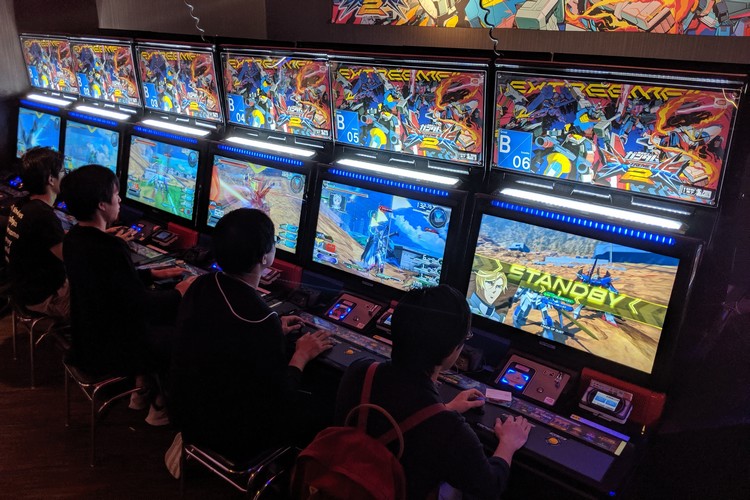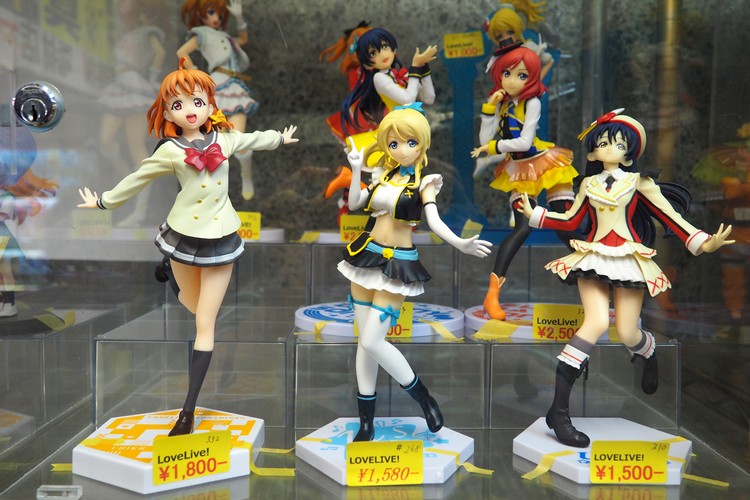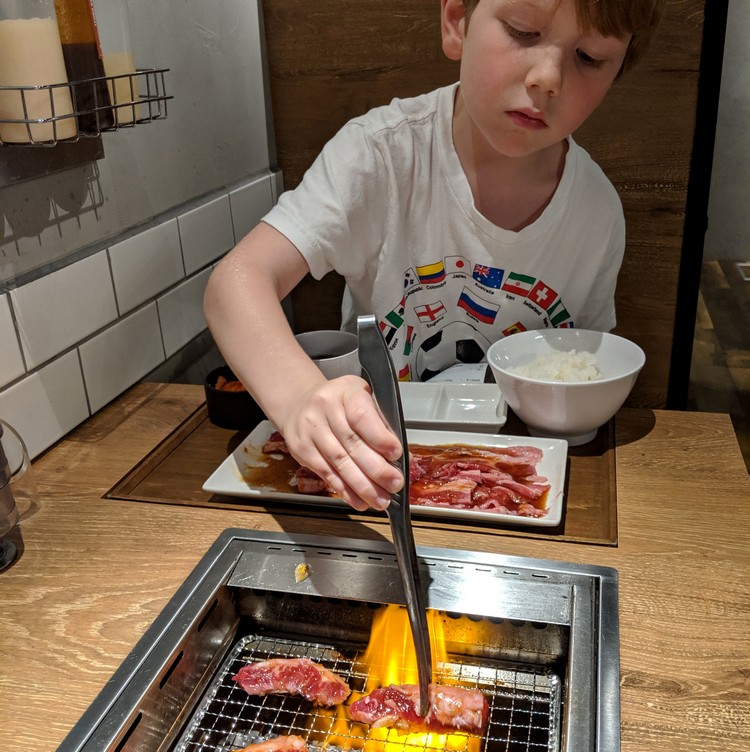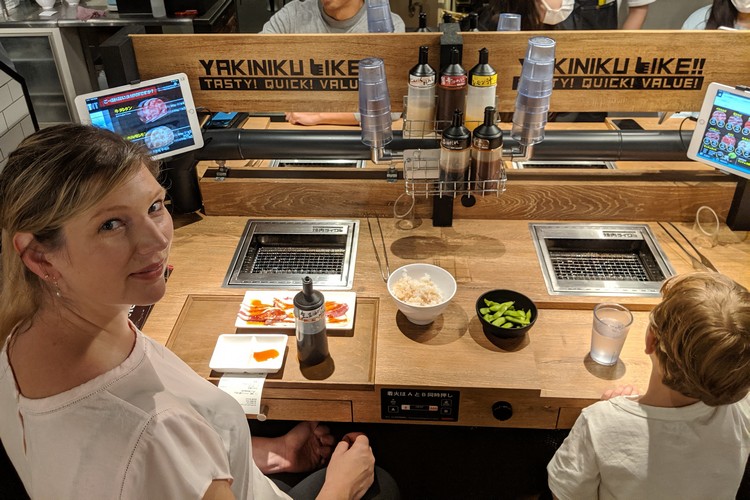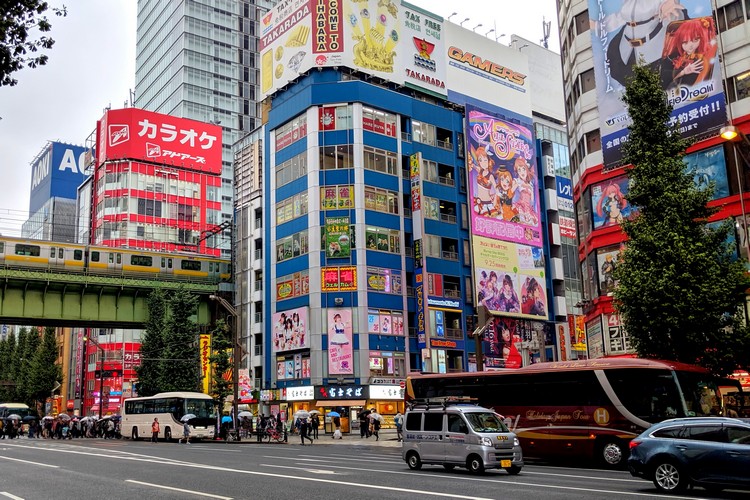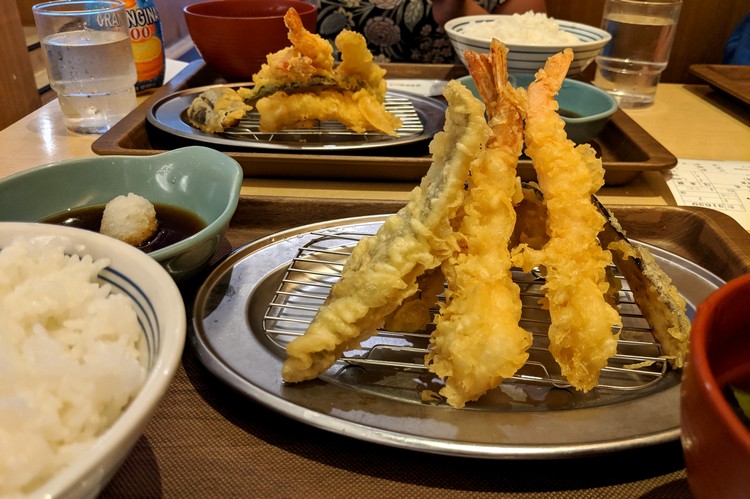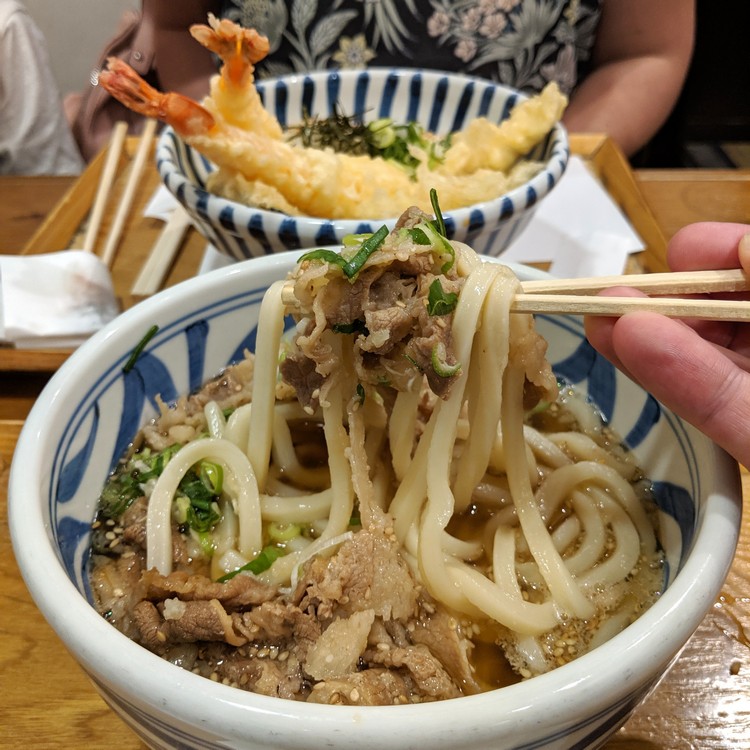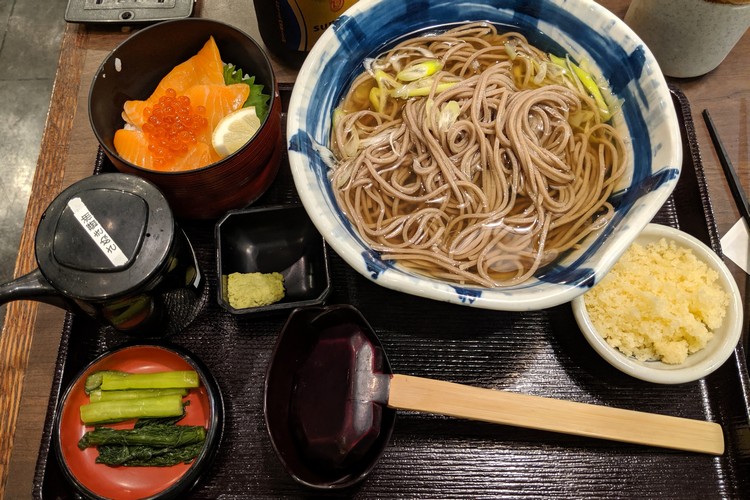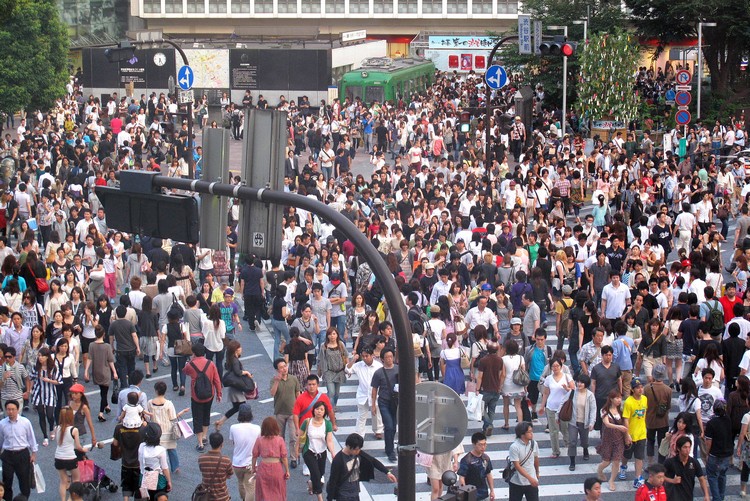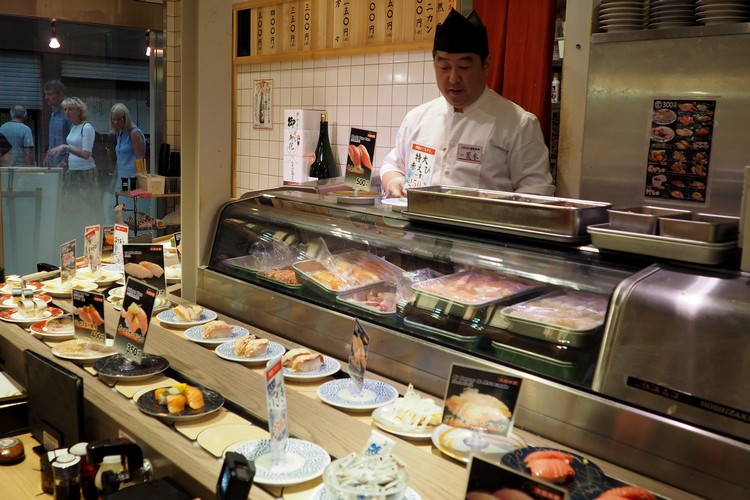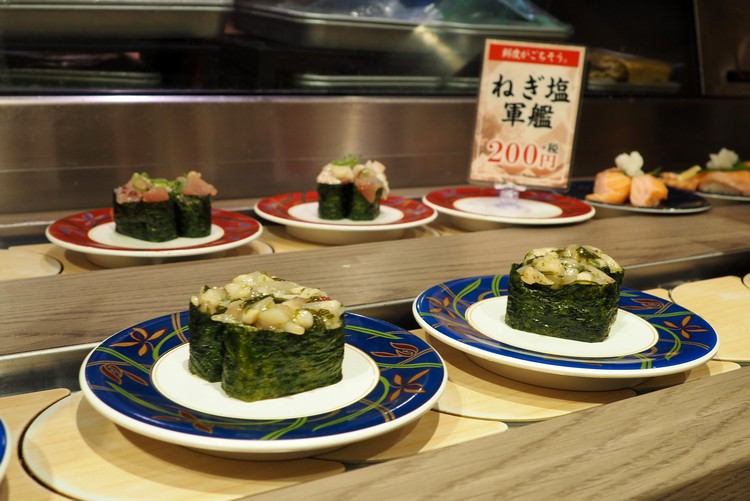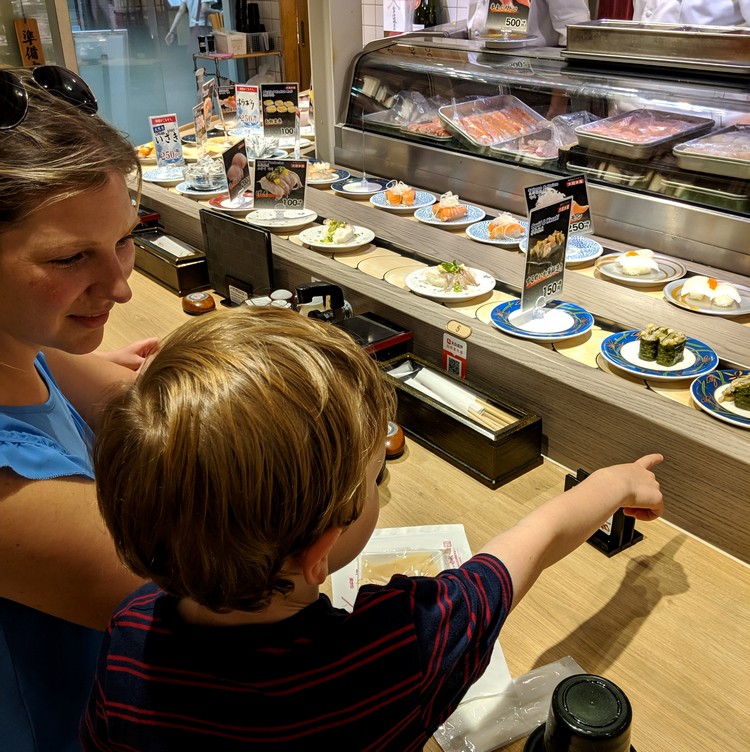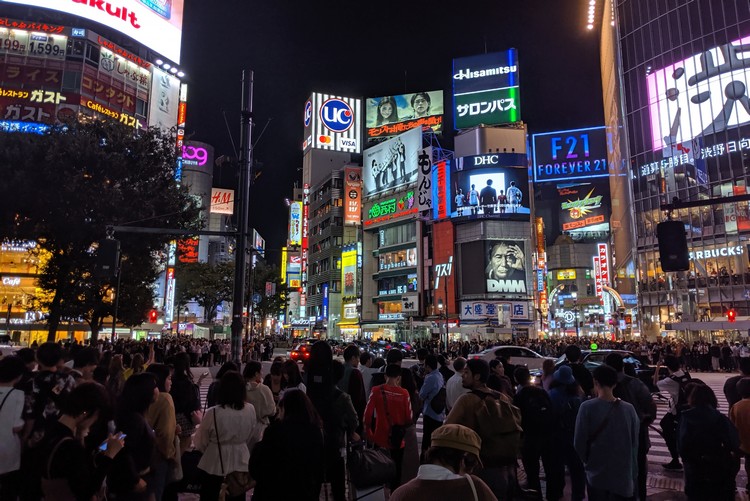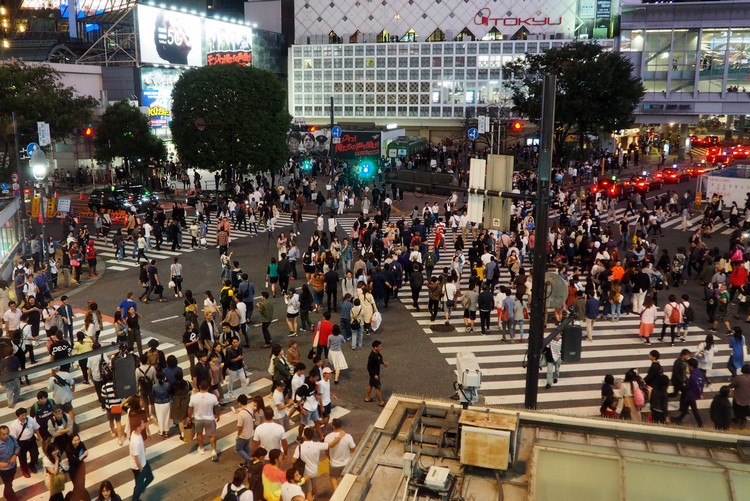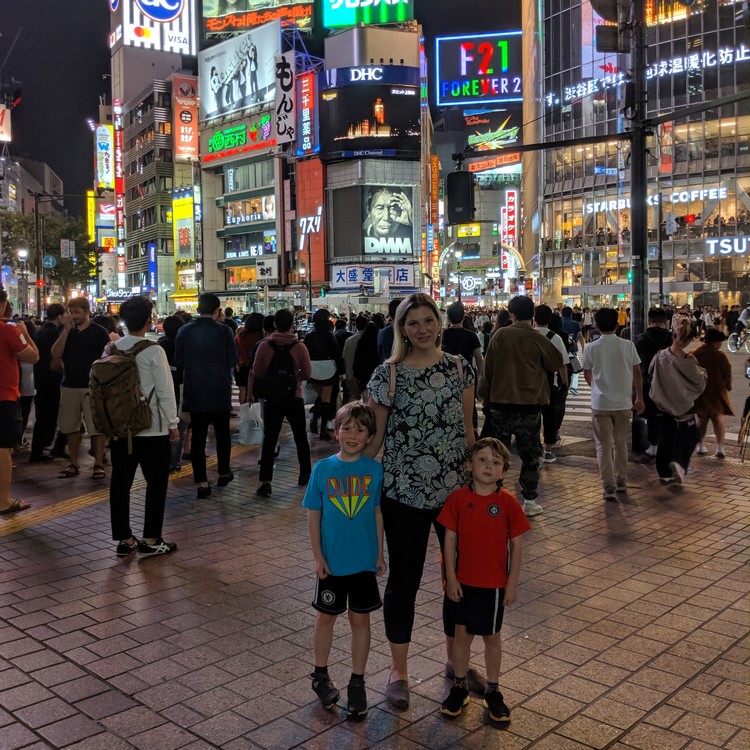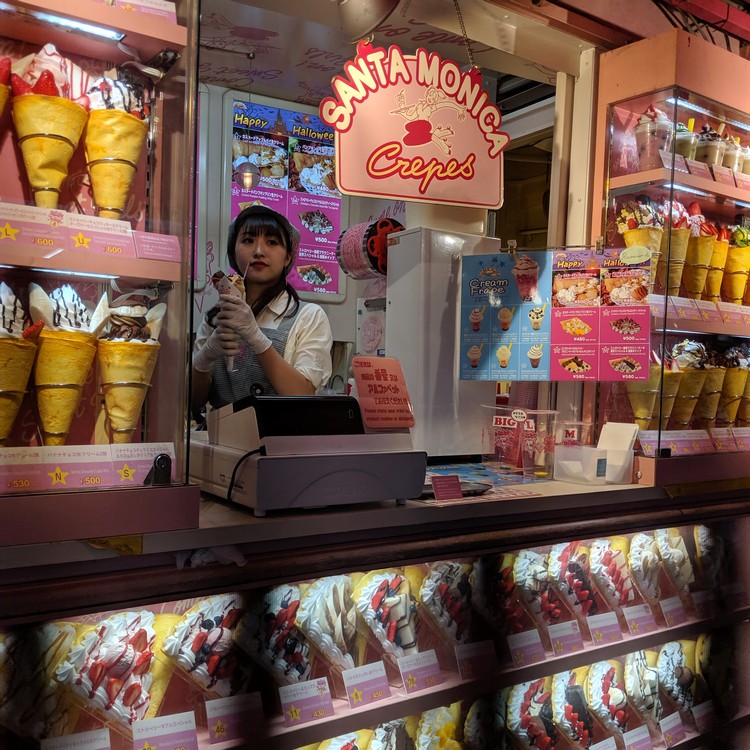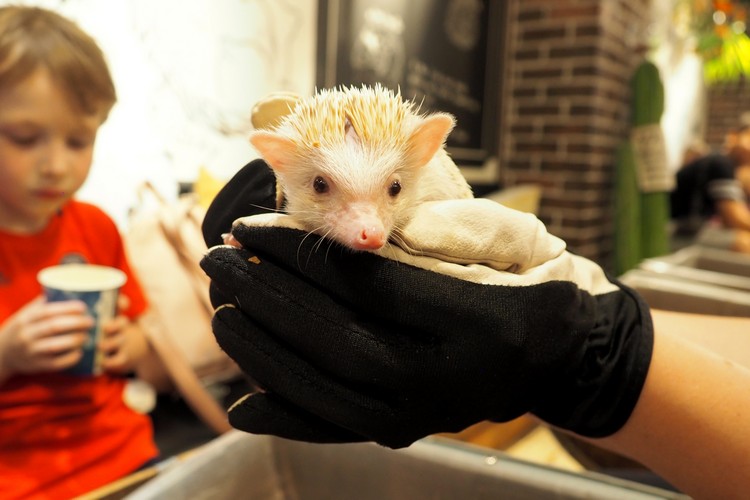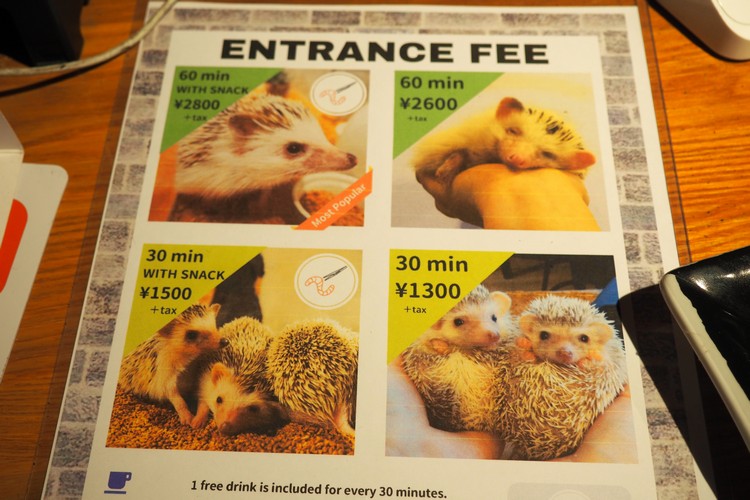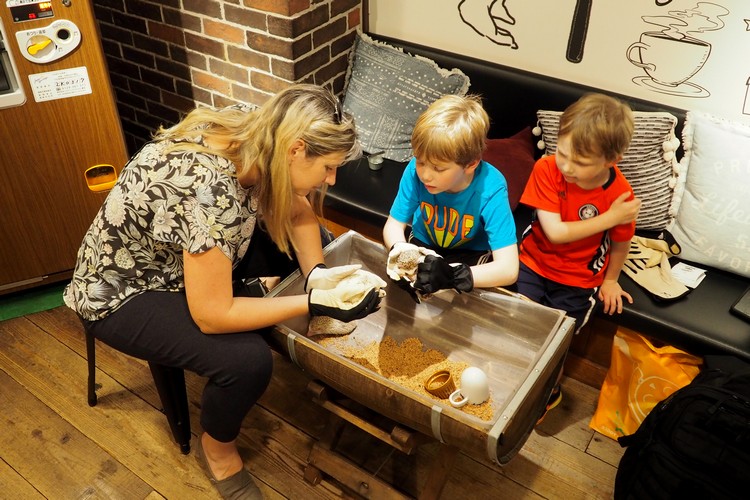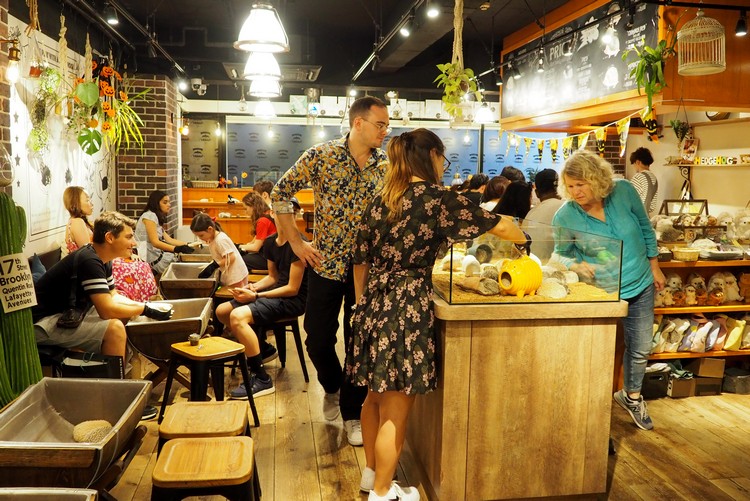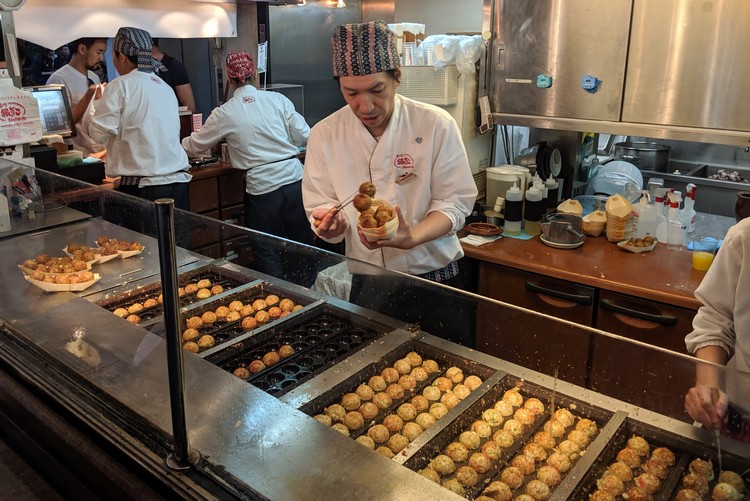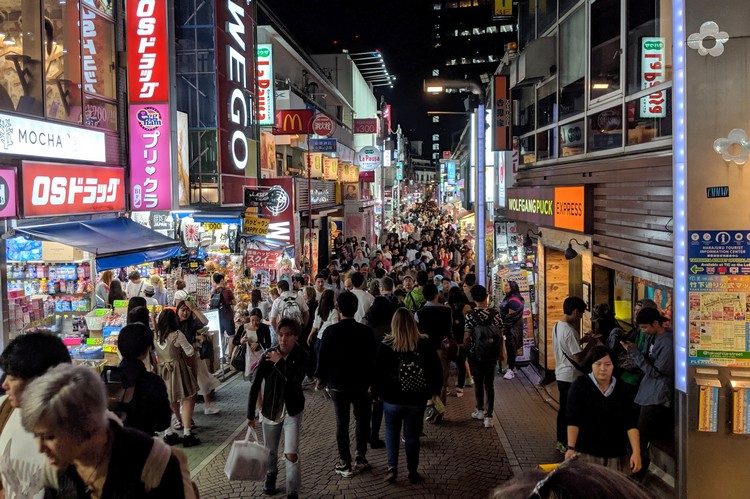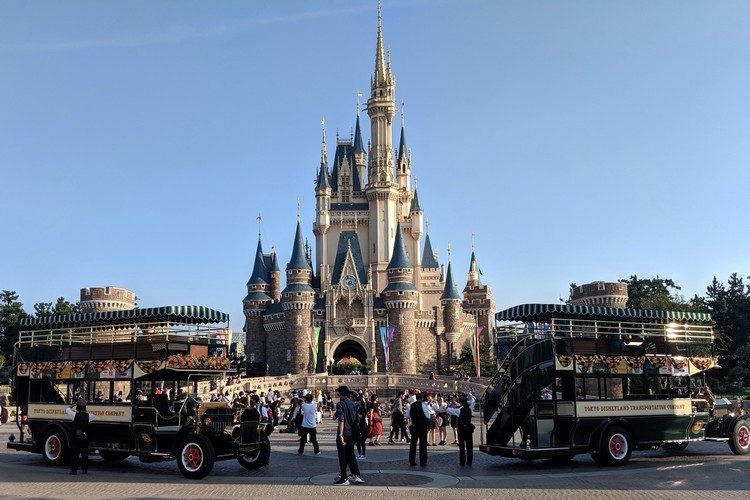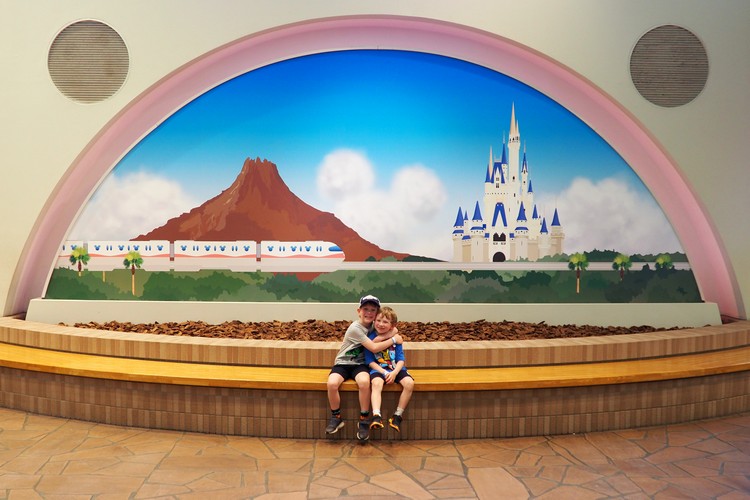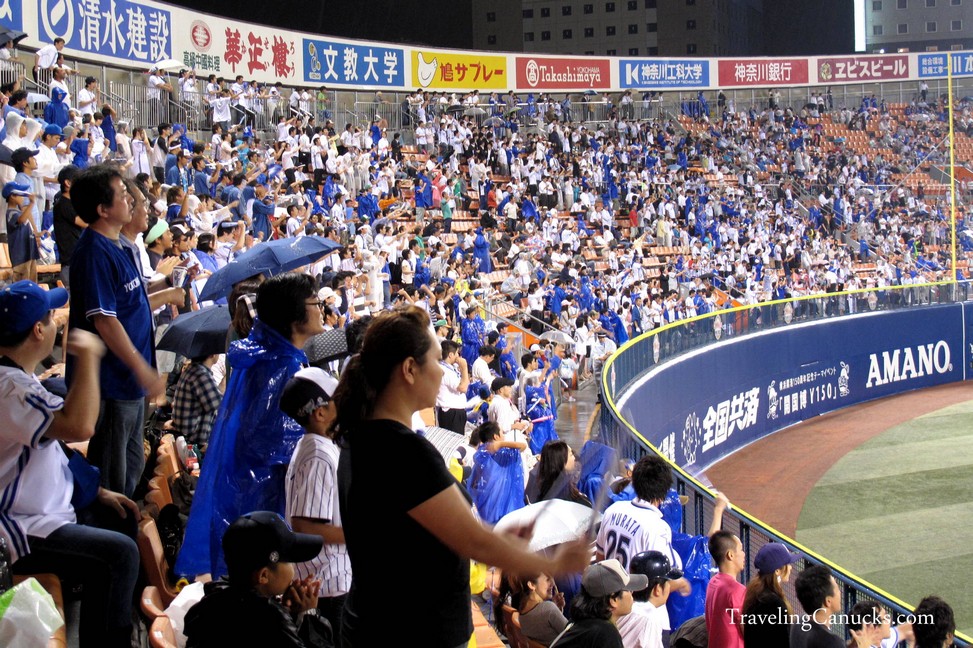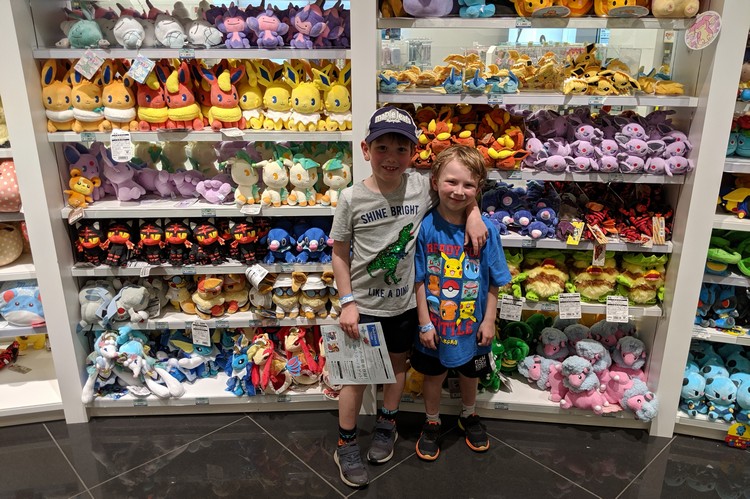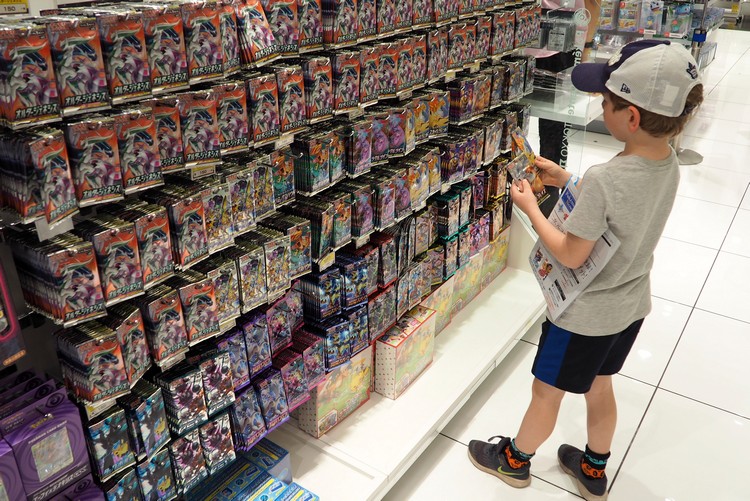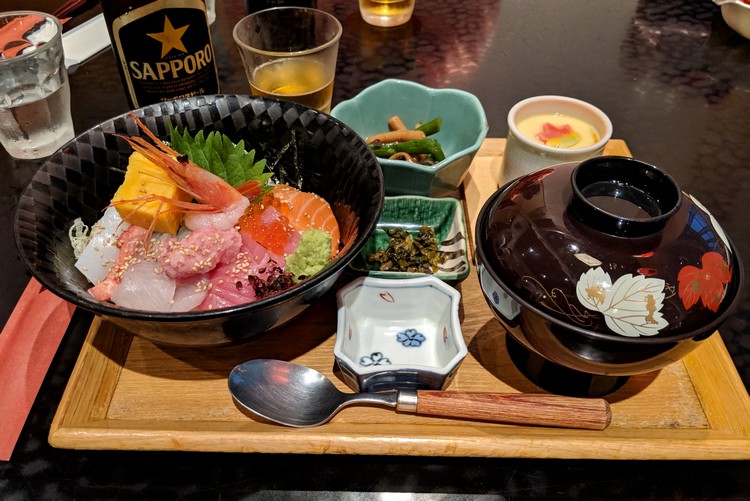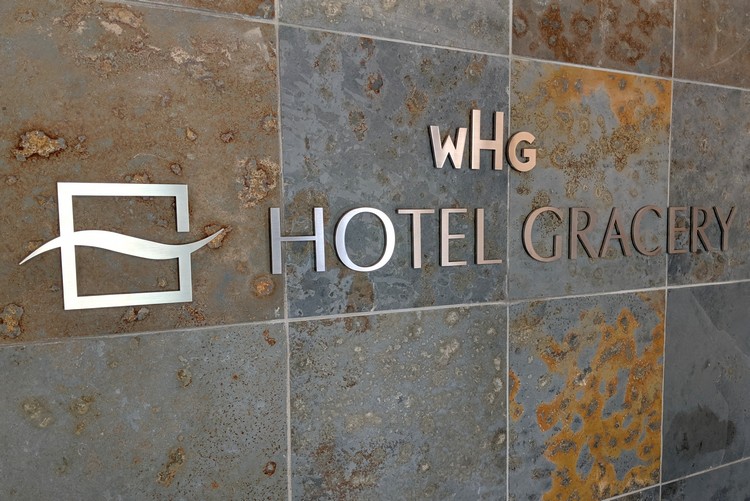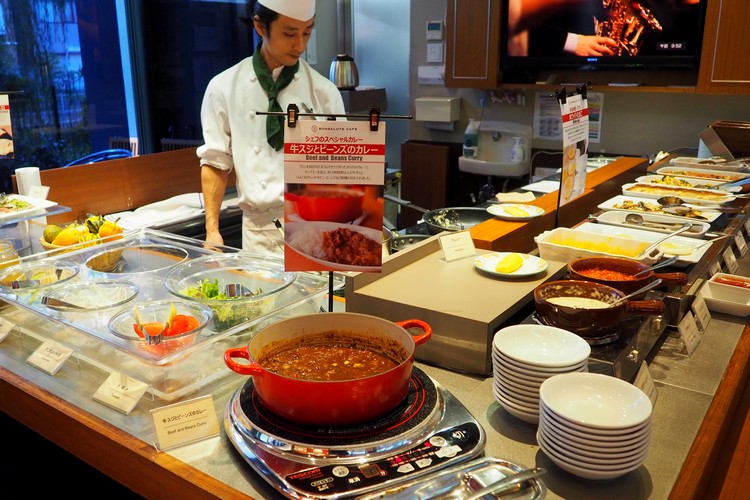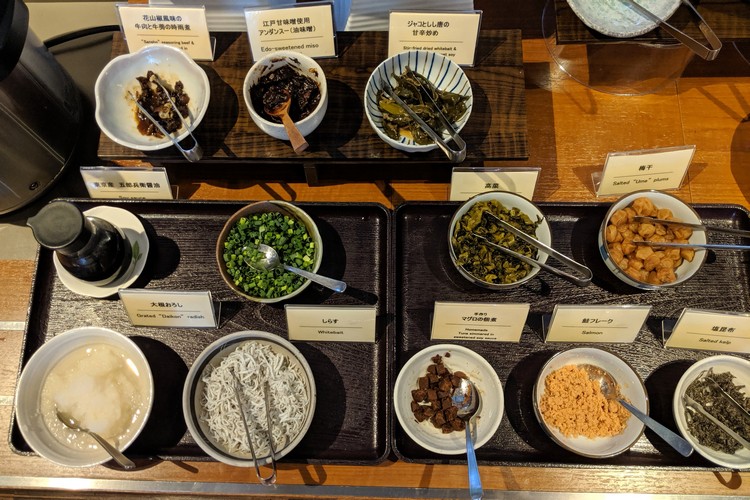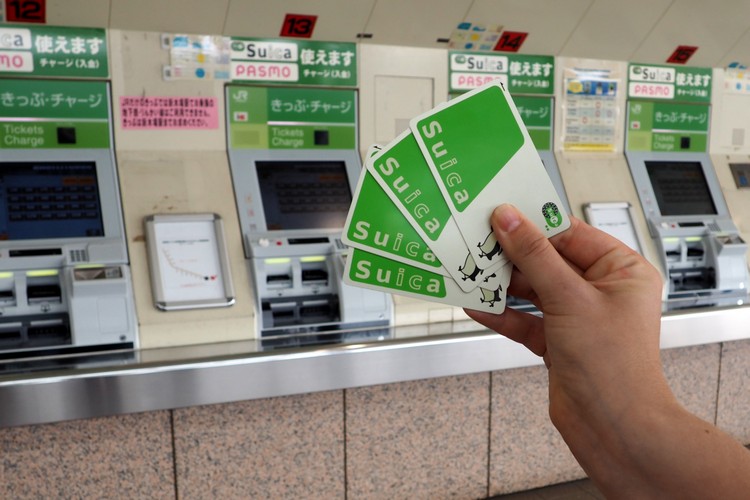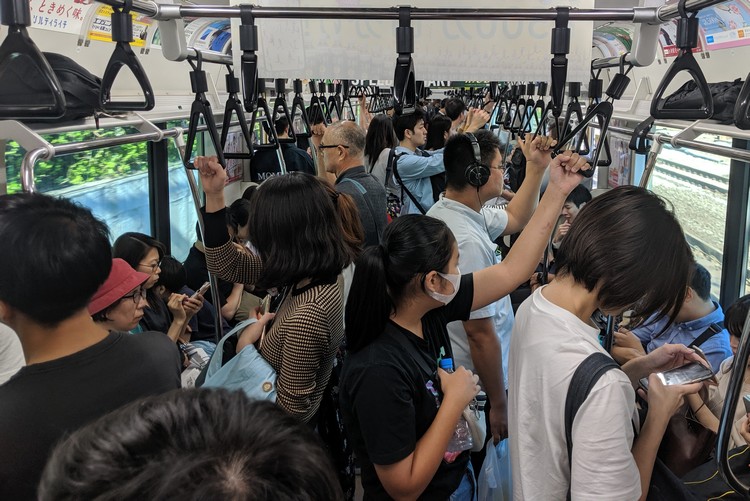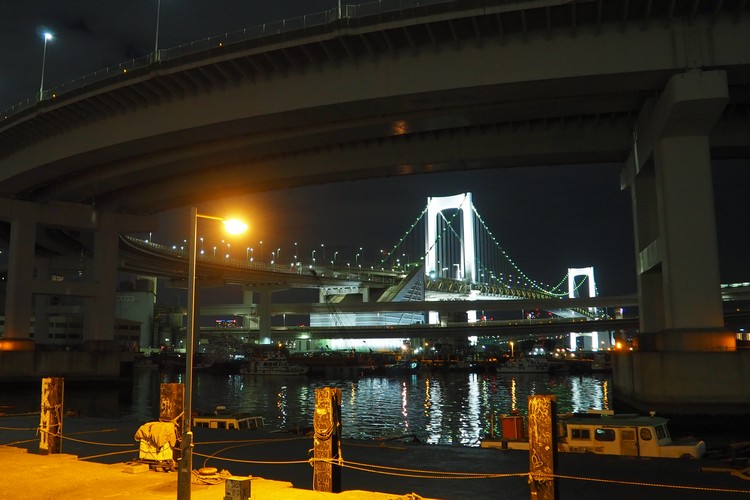Are you planning to travel to Japan for the first time? If so, this detailed Tokyo blog post was written for you.
Most first time visitors to Japan will arrive, and likely depart, from Tokyo. It’s a fascinating city that deserves at least a few days of exploration. In this post, we share how to spend 3 days in Tokyo, including the must-see tourist attractions, where (and what) to eat, where to stay, and how to get around this mega-city.
Japan is a country we will visit again and again.
It’s such an interesting and diverse country with so many things to see and do (and eat). It’s easily one of our favourite travel destinations.
We returned to Tokyo in October 2019 to attend the 2019 Rugby World Cup. This trip to Japan was 15 days. We spent a total of 5 nights in Tokyo (4 upon arrival and 1 before departure).
We visited Tokyo with our two boys, aged 8 and 6 years old at the time. Therefore, some of the recommendations in this Tokyo travel guide will be family friendly. However, we’ll also include a few adult focused Tokyo travel recommendations.
How to spend 3 days in Tokyo
Skip ahead using the Table of Contents above.
How many days to spend in Tokyo?
We believe three days is sufficient, however, you can easily spend a week exploring Tokyo’s many neighborhoods, restaurants and attractions. Tokyo is the largest city in the world, after all.
How much time to spend in Tokyo will depend on your travel style.
Do you like to get up early and explore all day and night? Or, do you prefer to sleep in late and take things slow?
Do you like to visit temples and museums? Or do you prefer quirky cafes and theme parks?
Will you be visiting during a world event, like the Tokyo 2020 Summer Olympics? If so, you may want to spend more than 3 days in Tokyo. We’ve added a few extra things to do in Tokyo later in this post.
Another thing to consider is jet lag. Whenever we encounter a significant time zone change, we like to go slow on the first day. Tokyo is 16 hours ahead of the Pacific Time Zone, which can seriously mess with your energy levels.
For this suggested 3 days in Tokyo itinerary, we assume that Day 1 is a relatively jet lag free day.
However, if you’re traveling to Japan with kids, you may want to get some rest on your first day. Don’t try to do too much while your body is adapting to the time zone change and culture shock.
Is Tokyo expensive to visit?
Yes. Tokyo is an expensive city. However, visiting Tokyo does not need to break your travel budget. Like most big cities, there are ways to keep your costs down.
Most of your travel expenses will be associated with accommodations and food. Therefore, your travel style will ultimately decide how expensive Tokyo is for you.
We stayed at the Hotel Gracery Tamachi during this visit to Tokyo. The price range for 3 star hotels in Tokyo is between $200-$300 CAD per night. If you’re traveling solo, you can save money by staying at a capsule hotel (like these), which range between $50-$100 CAD per night.
Tokyo is known as the culinary capital of the world. It holds the world record for the most Michelin-starred restaurants within a city. For that reason, it’s easy to blow your budget on fine dining experiences in Tokyo.
That said, it’s also home to the best ramen joints on the planet. So there’s plenty of options for every budget and travel style.
How much should you budget for Tokyo per day?
For our family of four, we spent around $500 CAD per day. On the surface that may seem like a lot of money. However, that includes hotel accommodations (which is approx. $250 CAD per day), food and drink, transportation and activities.
You can save money by booking hotels that include breakfast. Hotel Gracery Tamachi offers an excellent breakfast, so we made sure to fuel up before heading out. If your Tokyo hotel does not offer breakfast, you can grab an inexpensive breakfast at a convenience store, like 7-Eleven or Family Mart.
Typical travel expenses in Tokyo:
- Tokyo Metro fares range from ¥170 ($2.25 CAD) to ¥320 ($4.00 CAD) depending on how far you travel on the train. You can also purchase a one day pass for ¥600 ($8.00 CAD) per person, per day.
- Sandwich at 7-Eleven or Family Mart range from ¥200 ($2.50 CAD) to ¥350 ($4.50 CAD).
- Cold drinks from vending machines are ¥150 ($2.00 CAD).
- Ramen noodles at a restaurant cost approximately ¥900 ($12.00 CAD).
- Nigiri sushi is around ¥200 ($2.50 CAD) per pair (see photo above).
- Asahi beer at a restaurant is approx ¥500 ($6.00 CAD) per beer.
- Can of beer from a convenience store is between ¥200 ($2.50 CAD) to ¥350 ($4.50 CAD).
Read more Japan travel tips for first time visitors.
Day 1 – Imperial Palace, Akihabara & Asakusa
For your first day in Tokyo, we recommend you visit the Imperial Palace, Akihabara and Asakusa.
First stop – Tokyo Imperial Palace
The Imperial Palace is the primary residence of the Emperor of Japan. You can join a free guided tour of the Imperial Palace that starts at 9:00 AM. Only 300 people are allowed per tour. It’s on a first come basis, so you’re best to arrive early. More info here.
How to get to the Tokyo Imperial Palace?
Take the train to Tokyo station and exit on the west side. It’s about a 15 minute walk from the Tokyo station to Nijubashi Bridge (pictured above) and Kokyo Gaien National Garden. The grounds are quite large, so there are multiple entry points.
You can also visit the Imperial Palace East Garden from the Otemachi Subway Station. It’s a 10 minute walk from the subway station to the Imperial Palace.
Above – the well-groomed grounds surrounding Tokyo Imperial Palace
Do not lean or sit on this railing!
To capture the standard tourist photo of the Imperial Palace and Nijyubashi Bridge, you will inevitably walk towards the single railing that our boys are leaning on in the above photo.
We made a common tourist mistake by leaning on this railing. Bad tourists. Do NOT do this!
About 10 seconds after I took this photo, an angry security guard blew his whistle and yelled at us. He is tasked with keeping snap-happy tourists from leaning on this sacred railing or stepping on the well-manicured grass. He takes his job very seriously.
It’s actually quite comical because the only warning (that we saw) is small print on the railing. Therefore, every tourist makes the same mistake because it’s a great spot to take a photo.
If you look closely, to the left of Nicole in the photo above, you will see small white letters on the black railing. That’s the warning sign that says “Keep off the railing”. Or something to that effect.
Consider yourself warned!
If you do not join a guided tour of Tokyo Imperial Palace, you will only need 30 minutes to walk around the complex and admire the old stonework and gardens around the moat.
Hibiya Park
If you’d like to spend more time outdoors, walk from the Imperial Palace to Hibiya Park.
Depending on the time of year, you may witness beautiful cherry blossoms or autumn colours at Kumogata Pond and Shinji Pond. You can walk around the park in 30 to 45 minutes.
Next stop – Akihabara
After visiting the Imperial Palace, head back to Tokyo Station and take the JR Yamanote Line to Akihabara Station. It’s only two stations, so it takes about 10 minutes.
Akihabara is a popular shopping area in Tokyo known for electronics retailers and video games. It’s also home to many Japanese subcultures, like anime, manga comics, and video games. If you’re interested in purchasing high-tech gadgets, cameras and/or unique video games, Akihabara is the place for you.
Akihabara is also known for its many arcades and game rooms, which is great for kids of all ages. Games typically cost about 100 yen per game, which is about $1.25 CAD.
This drum game is very popular and found at most Tokyo arcades.
Connor won this huge Pokemon on our first day in Tokyo. Now, as parents, we’re happy that he won this prize. He was very excited.
However, we don’t advise you play this game on your first day. We had to drag this huge stuffie around Japan for two weeks! Lesson learned.
Things to do in Akihabara, Tokyo
- Visit an arcade – there are dozens of arcades within a few blocks. Even if video games are not your thing, it’s fun to visit these arcades and witness the passion some players have for video games.
- Street Go-Kart around Tokyo – dress up as your favourite anime/game character and drive through the Otaku district like the famous Mario Kart game. You need a Japanese or International Driving License to drive the go-karts around Tokyo. More info here.
- Kanda Myojin Shrine – one of the most important shrines in Japan. It dates back to 730 AD and sits on some of the most expensive real estate in Tokyo. More info here.
- Visit a Maid Cafe – maid cafes are a big part of Japanese Otaku culture and Akihabara is home to many of the most popular maid cafes in Tokyo. We did not visit a maid cafe, for a few obvious reasons. It’s just not for us. However, they are certainly a unique Tokyo attraction.
- Yodobashi-Akiba – visit the largest electronics store in Akihabara and shop for the latest devices, high tech gadgets, cameras, toys and games.
Above – maid cafe girls in Akihabara promoting their quirky cafe.
One of the many arcades in Akihabara Tokyo.
Above – manga girl figurines for sale at a retail store in Akihabara.
Where to eat in Akihabara
At this point in your day, you’re probably getting hungry. Like most busy shopping areas in Tokyo, there are hundreds of Akihabara restaurants to choose from.
We stumbled upon a great yakiniku restaurant named Yakiniku LIKE. Yakiniku is a Japanese term that refers to grilled meat cuisine. Basically, you grill your meat on an open flame at your table.
Our boys loved the idea of grilling meat on the table. It was a highlight for them.
Try to visit a yakiniku restaurant at least once during your 3 days in Tokyo.
Yakiniku Restaurant in Akihabara Tokyo
The tables are designed for single seating, so you won’t find a traditional table for four in this restaurant. However, we were able to sit across from each other. There was a short wait because we needed four seats, but it only took about 10 minutes.
Once seated, you place your order on the tablet at your table. The menu on the tablet translates to English and has photos of each dish, so it’s an easy process with limited ‘lost in translation’ moments.
We ordered a variety of pork and beef. The raw meat is marinated and sliced. It’s served with rice and there are several condiments at your table.
More popular Akihabara Restaurants
- Tonkatsu Marugo – said to be one of the finest Tonkatsu restaurants in Tokyo.
- Tempura Hisago – known for it’s wide variety of seafood, meat and vegetable tempura.
- Kyushu Jangara Ramen Akihabara – great place for a delicious bowl of ramen.
- Kanda Yabu Soba – one of the oldest soba restaurants in Tokyo.
- Samurai Rock Restaurant – entertaining show restaurant. You need reservations. Learn more.
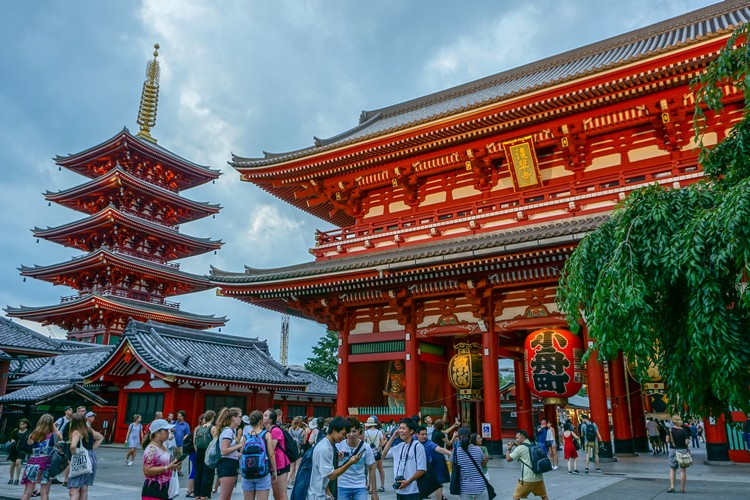
Next stop – Asakusa
After spending a few hours in Akihabara, we suggest you visit Asakusa next.
To get there, head back to Akihabara Station and take the Tsukuba Express train two stops to Asakusa Station. The distance between Asakusa and Akihabara Station is 2 km and it takes less than 10 minutes.
Asakusa is where you will find the more traditional side of Tokyo. That said, it’s also one of the most popular tourist attractions in Tokyo and used to be Tokyo’s entertainment district.
Asakusa is home to Sensoji Temple, the oldest Buddhist temple in Tokyo. Other notable landmarks are Asakusa Shrine, one of the most famous Shinto shrines in Tokyo, and Kaminarimon Gate, the entrance gate that leads to Sensoji Temple, and Hozomon Gate.
Things to do in Asakusa Tokyo
- Asakusa temples – marvel at the beautiful architecture of the gates and five story pagoda, smell the burning incense, listen to the bells and clapping worshipers. Sensoji Kannon temple is said to be the most widely visited spiritual site in the world with over 30 million visitors annually [source].
- Take a guided rickshaw tour – this is a fun way to see the sights and explore the old neighborhoods. It costs between 7500 and 9000 yen for a 30 minute tour for two people.
- Nakamise Shopping Street – historical shopping street that connects Kaminarimon Gate and Sensoji Temple. Vendors sell a variety of traditional food and tourist souvenirs.
- Sumida Park – walk along the Sumidagawa River and view the city skyline, including the Tokyo Skytree and Asahi Beer Tower. This riverside park is especially crowded during the cherry blossom festival season because it has over 500 cherry trees.
- Sumida River Cruise – admire Tokyo’s skyline by floating down the Sumida River on a sightseeing cruise. The Asakusa-Odaiba Direct Line is one of the most popular routes.
- Asakusa Culture Tourist Information Center – head to the observation deck on the 8th floor and check out the awesome views of Sensoji Temple, Nakamise Shopping Street and Tokyo Skytree.
- Hanayashiki Amusement Park – miniature amusement park with a small roller coaster, haunted house, Merry-go-Round and Space Shot. See park attractions here. You would likely spend two hours here, so you may want to visit this amusement park first.
- Tokyo Skytree – witness panoramic views of Tokyo from two enclosed observation decks, located at heights of 350 and 450 meters. These are the highest observation decks in Japan. Tokyo Skytree tickets and hours of operation here. It’s a 20 minute walk across the Sumida River from Asakusa. Or you can take the Tobu Skytree Line one stop.
Read more Japan travel tips for first time visitors.
Where to eat in Asakusa Tokyo
There are endless Asakusa restaurants, cafes and izakayas to choose from, but here are a few interesting places worth visiting.
- Asakusa Tsurujirou – famous for its Okonomiyaki, a Japanese savory pancake with a variety of ingredients. It’s located one block west on a street that runs parallel to Nakamise Shopping Street.
- Asakusa Kagetsudo – very popular store that sells melon-pan, a sweet baked bread with a top that looks like a cantaloupe melon.
- Ninja Cafe Asakusa – family friendly themed restaurant where guest can dress up like ninjas and practice some ninjutsu techniques. Dishes also have a ninja theme.
- Asahi Beer Hall – cross the Azumabashi Bridge over the Sumida River and enjoy a variety of beer and food at one of Japan’s most famous breweries.
- Kamiya Bar – open since 1880, it’s one of Tokyo’s oldest bars.
- Hoppy Street – enjoy a cheap Hoppy (beer flavored alcohol) at one of the izakaya restaurants on this lively street, located west of Sensoji Temple.
How to get to Asakusa from Tokyo Station
Asakusa can be reached by the Ginza Subway Line, Asakusa Subway Line, Tsukuba Express and Tobu Railways. To get to Asakusa from Tokyo Station, take the JR Yamanote Line to Kanda Station (2 minutes) and transfer to the Ginza Subway Line for Asakusa (10 minutes).
Bowl of beef udon noodle soup at Japanese restaurant in Tokyo.
Soba noodles and traditional Japanese cuisine in Tokyo, Japan.
Day 2 – Tokyo Tower, Shibuya, Harajuku & Shinjuku
On Day 2 of your 3 days in Tokyo, we suggest you visit a few more of Tokyo’s top tourist attractions – the Tokyo Tower, Shibuya Crossing, Harajuku and Shinjuku.
First stop – Tokyo Tower
Located in the center of Tokyo, standing at 333 meters, Tokyo Tower is an iconic symbol of Tokyo. It looks similar to the Eiffel Tower in Paris; however, the Tokyo Tower is red and stands 13 meters taller, making it the world’s tallest self-supported steel tower.
On a good visibility day you can see Mount Fuji from the Tokyo Tower observation deck.
We recommend you visit the Tokyo Tower in the morning because it’s less crowded at this time (compared to sunset hour, when it’s busiest). Normal opening time is 9:00 AM.
Tokyo Tower price of admission can be found here.
Note – your visit to Tokyo Tower is weather dependent. If it’s rainy or cloudy, you may want to skip the tower and do something else instead.
While there, you might want to visit Tokyo One Piece Tower, an indoor theme park based on the popular Japanese manga series, One Piece. The amusement park offers a variety of shows, games and attractions that feature characters from the series. More info here.
Shiba Park and Zojoji Temple
While you’re at Tokyo Tower, you might want to visit nearby Shiba Park, Japan’s oldest public park. The main attraction in the park is the impressive Zojoji Temple.
The park is home to several old Buddhist temples, the Mausoleum of Tokugawa Shoguns, Gate of Daitokuin Mausoleum and Sangadetsumon Gate, said to be the oldest wooden building in Tokyo.
You will likely walk through Shiba Park if you plan to catch the subway at Onarimon Station.
How to get to Tokyo Tower?
There are no train or subway stations at Tokyo Tower. The closest stations to Tokyo Tower are Kamiyacho Station on the Hibiya Subway Line, Onarimon Station on the Mita Subway Line and/or Akabanebashi Station on the Toei Oedo Line. From each subway station it’s about a 10 minute walk to Tokyo Tower.
More information on how to get to the Tokyo Tower here.
Next stop – Shibuya and the Shibuya Crossing
After spending the morning at Tokyo Tower, the next stop is a visit to Shibuya and its famous Shibuya Crossing. It’s one of the busiest intersections in the world, with over 2,500 people crossing this intersection at one time. It’s also one of the most popular Instagram locations in Tokyo.
Shibuya is fun to explore both during the day and at night. It’s a hugely popular shopping and entertainment district with dozens of department stores and countless restaurants, bars and clubs.
There are a few different ways to get from Tokyo Tower to Shibuya station by train.
The easiest route is to walk south from Tokyo Tower towards Akabanebashi Station (10 minutes). Get on the Toei Oedo Line and switch trains at Aoyama-Itchome Station (3 stops – 6 minutes). Then, get on the Hanzomon Line and get off at Shibuya Station (2 stops – 4 minutes).
The best places to view Shibuya Crossing
- Starbucks (Shibuya Tsutaya) – this is one of the busiest Starbucks on the planet and it’s the best-known spot to view Shibuya Crossing. It’s a popular location, so it might take a few minutes to get a seat, but it’s a great place to watch the organized chaos.
- L’Occitane Cafe – located on the 2nd and 3rd floor of the L’Occitane store, you can enjoy a drink and snacks while people watching.
- MAG’s Park – located on top of the Magent by Shibuya 109 building, this is arguably the best Shibuya Crossing Viewing Spot. There is an entrance fee of 600 yen. More info and directions here.
- Shibuya Mark City Walkway – located between the JR Yamanote Line’s Tamagawa Exit and the Keio Inokashira Line Exit. The walkway has glass walls so you can easily see the crossing from this viewpoint.
- Shibuya Sky (Shibuya Scramble Square) – unique rooftop observation deck at 229 meters. It also has panoramic views of Tokyo.
Next – have lunch near Shibuya Crossing
After watching the endless flow of people at Shibuya Crossing, you’re likely getting hungry. This is a good place to have lunch. There are hundreds of Shibuya restaurants and cafes to choose from, so let your curiousity take over.
We recommend you find a Kaiten sushi restaurant – sushi that is served on a conveyor belt. It’s a fun way to try a variety of nigiri and roll sushi at your pace. It also reduces order envy (or disappointment) because you can see the sushi before you pick it up from the conveyor belt.
Kaiten sushi restaurants near Shibuya Crossing:
- Genki Sushi
- Katsumidori Seibu Shibuya
- Ganso Sushi Shibuya D?genzaka
Related – Beginner’s Guide to Food in Japan for tourists
We recommend you also visit Shibuya Crossing at night.
The huge neon signs light up the sky and gives you a different perspective from the daytime experience. If you have time, consider visiting the Shibuya Crossing during the day and at night.
View of Shibuya Crossing from the Starbucks.
Next Stop – Meiji Jingu Shrine & Harajuku
If you’re a temple person, we recommend you visit Meiji Shrine. To get to Meiji Jingu Shrine, take the train one station from Shibuya to Harajuku. From Harajuku, cross the street and walk to Meiji Jingu First Torii gate.
Meiji Jingu Shrine is located in a serene forest in the middle of the city. It’s a Shinto shrine dedicated to the deified spirits of Emperor Meiji and his wife, Empress Sh?ken.
Next to Meiji Jingu Shrine is Yoyogi Park. It has pleny of green space so it’s also a good place for an easy stroll, picnic or quick break from the chaotic mega-city.
Harajuku & Takeshita Street in Tokyo
Harajuku is a popular shopping neighbourhood in Shibuya, known for its bustling Takeshita Street and Cat Street. Takeshita Street, pictured above, is a pedestrian street lined with fashion boutiques, restaurants and cafes.
Though it’s known for its youth culture and street fashion, Harajuku has become a popular Tokyo tourist attraction over the years.
Santa Monica Crepes Harajuku
Santa Monica Crepes is a popular cafe on Takeshita Street in Harajuku.
You can choose from over 50 options, including whip creme with fruit, custard cream with chocolate brownies, ice cream with strawberries, and even tuna with mayo and lettuce.
Other popular crepes in Harajuku are Marion Crepes and Angel’s Heart Crepes.
Related – Japan travel tips for first time visitors
HARRY Hedgehog Cafe in Harajuku
Tokyo is known for its quirky themed cafes. You should check out at least one during your 3 days in Tokyo.
There are plenty of themed cafes in Tokyo, from animal cafes to maid cafes to ninja themed cafes. Do your research and find one that interests you.
Our boys wanted to visit an animal cafe in Tokyo. However, we were concerned about the safety and treatment of the animals.
We acknowledge that some people are against animal cafes.
We understand why. It’s a controversial and sensitive topic. We had mixed feelings about visiting. If this type of tourism is not for you, that’s perfectly fine. Skip ahead to the next stop.
We did some online research and decided to visit the Hedgehog Cafe in Harajuku. The online reviews that we read made us feel comfortable that staff treat the hedgehogs well. However, we also read a lot of heated negative reviews.
The hedgehogs are given separate resting areas and they are rotated out of handling time frequently. This gives the hedgehogs a rest from human contact. We like that this hedgehog cafe also sells hedgehogs to the public. The hope is that their hedgehogs eventually find a home. They breed the hedgehogs to be pets, so they aren’t capturing these animals from the wild.
Hedgehog Cafe in Tokyo
Admission price for HARRY Hedgehog Cafe is based on how long you want to stay in the cafe. We did 30 minutes with snack, which cost 1500 Yen per person at the time of our visit (approx. $20.00 CAD).
I believe there was a discount for children, but I don’t remember what it was.
After about 20 minutes our boys started to get bored. We feel 30 minutes is a good amount of time to spend at this cafe.
Guests are provided gloves to protect the hedgehog and the person handling them. We purchased hedgehog feed so that our boys could feed the hedgehog during our 30 minute handling time.
As you can see in the above photo, guests are assigned a table with chairs. The table is actually a big bin where the hedgehogs can move around.
HARRY hedgehog cafe is located 2 minutes from the Harajuku Station. It’s on the 4th floor, so you need to keep an eye out for the street sign (pictured above). More info here.
Gindaco Takoyaki Harajuku
After your time at HARRY Hedgehog cafe, we recommend you visit Gindaco Takoyaki and try its famous octopus balls. Gindaco Takoyaki is located between HARRY’s hedgehog cafe and Harajuku train station, so it’s a logical stop on your way back to the train station.
Next stop – Shinjuku
At this point in your day, you have decisions to make.
Do you call it a day and make your way back to your hotel room? Or, do you head out for a night on the town? That, of course, will depend on your travel style and what you plan to do on your next day in Tokyo.
If you want to experience Tokyo nightlife, consider visiting Golden Gai, a lively neighbourhood in Shinjuku where you’ll find over 200 miniature bars squeezed into a network of narrow alleys.
But be careful – the Japanese are known to work hard and party hard. There are several Izakaya alleys in Shinjuku, so let your senses guide you.
Tokyo Robot show in Shinjuku
If you’re in the mood for something whacky and unique, check out the robot show in Tokyo. The Robot Restaurant is another themed restaurant in Tokyo known for it’s over-the-top entertainment that includes robotic monsters, live music, cabaret dancers, flashy neon lights, giant dinosaurs, ninjas and much more. It’s like nothing you’ve seen before.
If you have not heard of the Robot show in Tokyo, watch this video.
Unfortunately, we did not visit the Robot Restaurant in Shinjuku during our 3 days in Tokyo. Our boys were pretty tired at this point and Tokyo robot shows are about 90 minutes. You are advised to show up 40 minutes before showtime, so it’s a commitment.
You can purchase Robot Restaurant tickets here.
The robot restaurant is located in Kabukicho, a famous entertainment district known for its adult-oriented nightlife. It’s often referred to as Tokyo’s red light district. Because of this, we felt it was inappropriate to bring our young boys to this part of town.
DAY 3 – Tokyo Disneyland and/or Tokyo DisneySea
The final day of your 3 days in Tokyo itinerary will depend on your travel style and what you like doing.
Do you like theme parks or sporting events? Do you like museums or temples? Or perhaps you want to learn how to make sushi or go on a Tokyo food tour?
For us, we chose to spend our day at Tokyo Disneyland. This was our first Disney experience as a family, so it was an exciting moment for our little tribe. See photos from our visit here.
We were undecided if we should visit Tokyo Disneyland or DisneySea. These two Disney parks are quite big, so it was not feasible for for us do both. We chose Tokyo Disneyland because it has some of the classic Disney experiences, like Pirates of the Caribbean, Star Wars and Big Thunder Mountain. Here’s the Tokyo Disneyland ride list.
Both Tokyo Disney Resorts are worth visiting. Many people believe Tokyo DisneySea is one of the best Disney Parks.
Related – Should you stay at a Tokyo Disney Resort? Our review
Other things to do in Tokyo, Japan
If you’re not interested in visiting Tokyo Disneyland or Tokyo DisneySea, there are plenty of other Tokyo tourist attractions and activities that will keep you busy. Of course, you could also slow down and stretch the first two days of this Tokyo itinerary into 3 days.
Watch a sumo wrestling match
When you think of a unique Tokyo experience, sumo wrestling surely comes to mind. If you’re fortunate to be in Tokyo when a sumo tournament is happening, consider re-working your itinerary to attend one of these events because they do not happen often.
Official sumo tournaments are held at Ryoguku Kokugikan (Sumo Hall) in Tokyo in January, May and September. However, if sumo matches are not taking place during your 3 days in Tokyo, consider attending a sumo practice, which happen more frequently.
Related post – Japan travel: Do’s and Don’ts
Watch a professional baseball game
The Japanese are crazy for baseball. Even if you’re not a baseball fan, you’ll enjoy the atmosphere at the baseball stadium. On a previous trip to Japan we watched a game at Yokohama Stadium between the Yokokama Baystars and Hiroshima Carp.
The Tokyo Dome, also known as The Big Egg, is the home field of the Yomiuri Giants baseball team. Beside the stadium you’ll find an amusement park with a roller coaster and a Ferris wheel.
Check the Nippon Profession Baseball schedule here.
Visit the Tokyo Pokemon Center
If you’re visiting Tokyo with kids, we recommend you check out the Tokyo Pokemon Center, the biggest Pokemon Center in Japan. This was a highlight for our boys, aged 8 and 6 years old at the time of visit.
They found unique Pokemon stuffies, toys and playing cards that became a big hit with their friends when they returned home. Apparently, according to our boys, Pokemon cards from Japan are the real Pokemon cards.
The Pokemon Center
Odaiba Entertainment District
Located on a man made island on Tokyo Bay, Odaiba Entertainment District is a popular Tokyo tourist attraction. You can easily spend a full day here.
Odaiba is famous for its interesting architectural creations, such as the Fuji TV Building, Telecom Center and Tokyo Big Sight. It’s also a great place to view Rainbow Bridge at night, when it is illuminated with colourful lights.
The Telecom Center observation deck offers panoramic views of the bay area and, if you’re lucky, you can see Mount Fuji on a clear day.
Mori Building Digital Art Museum: teamLab Borderless
Located in the Odaiba Entertainment District, teamLab Borderless is a the first digital art museum in the world. It’s become a top Tokyo tourist attraction since its opening in 2018.
Digital art exhibitions are spread throughout the museum and colourful digital images are projected on its walls and floors. This is also one of the most popular Instagram locations in Tokyo.
Tsukiji Outer Market
Tsukiji Fish Market was once the largest wholesale fish and seafood market in the world. However, in October 2018, the popular Tokyo fish market moved to a new location, Toyosu Market, located about 2.5 kilometres from the original Tsukiji Fish Market.
Although the wholesale fish market has since closed, the restaurants and stores that surround the old market are still popular with tourists. The reason you visit the Tsukiji Outer Market is to enjoy fresh sushi at one of the local restaurants. This area is said to serve the best fresh seafood in Tokyo.
While you’re in the neighbourhood, make sure you check out Tsukiji Honganji Temple, an impressive Jodo Shinshu Buddhism temple with unique architecture that is influenced by temples in India.
Shinjuku Gyoen National Garden
Shinjuku Gyoen is one of Tokyo’s largest and most popular parks. Located a short walk from Shinjuku Station, Shinjuku Gyoen is home to hundreds of cherry trees, which makes it an ideal place to enjoy the cherry blossoms that bloom from late March to early April.
Here’s a list of the best Tokyo cherry blossom locations.
Where to stay in Tokyo
Trying to decide where to stay in Tokyo is not an easy task. There are hundreds of hotels in Tokyo to choose from.
We recommend you stay in a central location that is close to a train station. The train and subway system in Tokyo is very good, and inexpensive. As long as your hotel is located near a train station, you’ll have easy access to most Tokyo attractions.
We stayed at Hotel Gracery Tamachi and would recommend it.
Most hotel rooms in Japan are small, when compared to North American hotels. The beds are small, too. We like that the Hotel Gracery Tamachi has rooms with two double beds plus a pull-out couch with a single bed. It was a comfortable stay for our family of four.
The Hotel Gracery Tamachi is located within walking distance to the JR Tamachi Train Station and Mita Subway Station. This made it easy to get around and visit the places in this suggested 3 day Tokyo itinerary.
Rooms at the Hotel Gracery Tamachi are affordable. Prices range from $100 CAD to $200 CAD.
The hotel has a great breakfast buffet for approx $24 CAD per person. The buffet offers an assortment of Japanese and western dishes. It’s a great place to fuel up before long days of sightseeing.
The breakfast buffet at the Hotel Gracery Tamachi in Tokyo.
How to get around Tokyo by train
The fastest and cheapest way to get around Tokyo is by train or subway. Most of the attractions in this 3 days in Tokyo itinerary can be reached via JR trains and Tokyo metro subway lines.
To save time, purchase a Suica Card, which is a prepaid smart card that allows you to use most public transport (metro, trains, buses, monorail).
You can purchase Suica Cards at most train stations using the electronic vending machines pictured above. Using the Suica Card means you don’t have to purchase tickets from the machines before each train ride.
A few things to know about Suica Card
- Suica Cards can be loaded up to a maximum of 20,000 yen at Automatic Ticket Vending Machines and Fare Adjustment Machines displaying the Suica mark.
- Prices include a deposit of 500 yen. The difference between the adult’s card and child’s card is the amount deducted when using transportation.
- You can use your Suica to make purchases onboard trains as well as from vending machines, to rent coin lockers and for spending at convenience stores and restaurants.
- Suica card does not work on express trains, shinkansen, long distance buses (highway buses) or airport shuttles.
- Only yen may be used to load a card. A credit card cannot be used to load a Suica.
Read more Tokyo travel tips here.
Is it safe to travel to Tokyo
Yes. We felt very safe in Tokyo. In fact, it might be the safest big city we’ve visited during our travels. We had no problem exploring the streets of Tokyo with our young boys and most people are willing to help tourists.
Japan consistently ranks as one of the safest countries in the world.
That said, Tokyo is the largest city in the world, so you need to practice common sense. There are pickpockets and opportunistic fraudsters in every country, including Japan. However, there are few reported cases in the big cities like Tokyo or Kyoto.
It’s wise to check travel advisories for Japan before booking your flight to Tokyo. You should also get travel insurance for your trip to Japan, just in case.
Read more posts from Japan:
Have you visited Tokyo? What did we miss on this 3 days in Tokyo itinerary?
Share you Tokyo travel tips and recommendations in the comments below.
